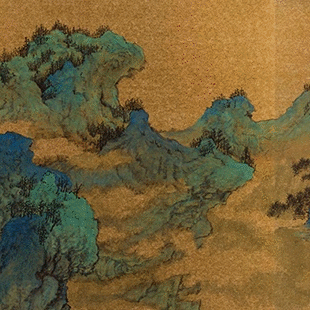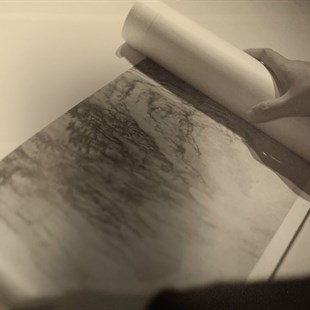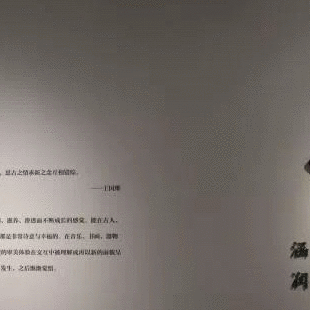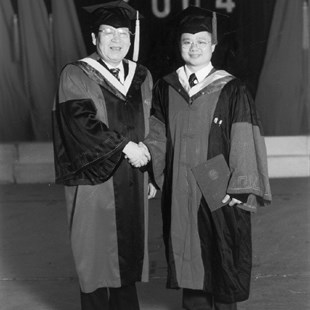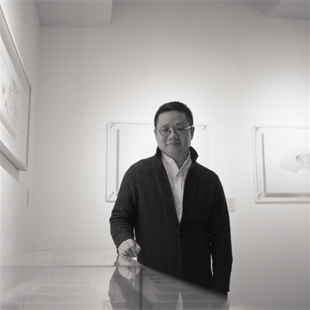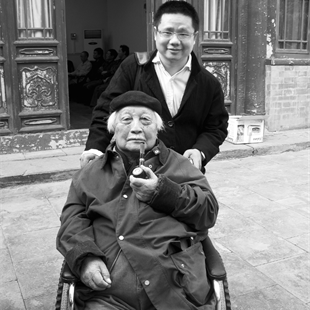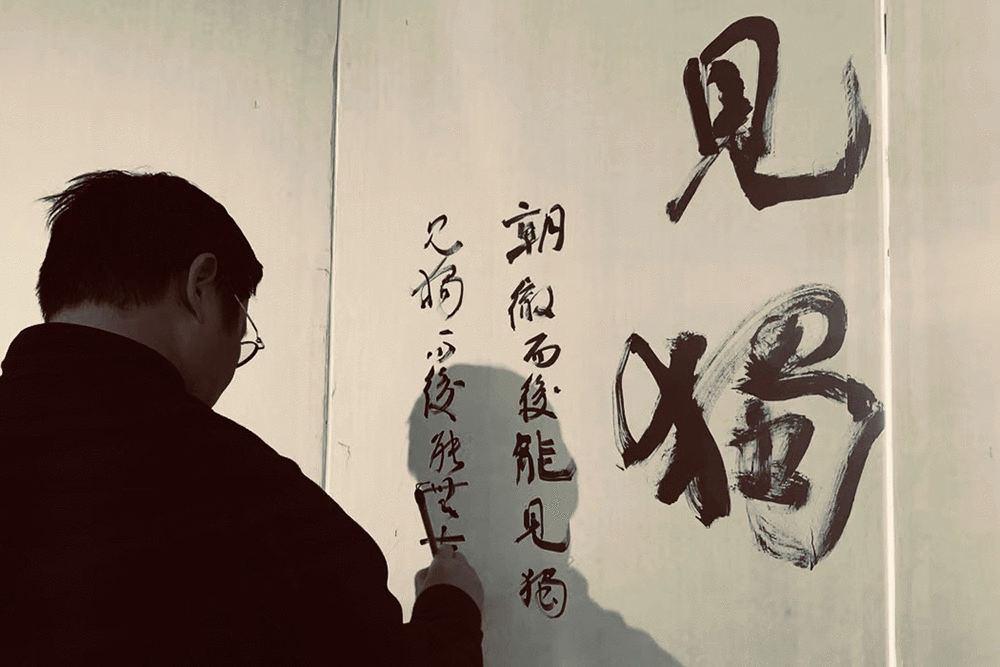
Editor’s note:
Whether it is the traditional mentoring system or the studio education in art schools, it can be said that art education always emphasizes the demonstration and direct guidance of teachers in person, but the sudden outbreak of COVID-19 in 2020 has changed this status: the campus was closed and the online teaching mode for students has become common practice. In order to cope with the impact of the pandemic, for the first time, the Central Academy of Fine Arts (abbr. CAFA) has also launched virtual art galleries for students who will graduate, building a solid platform to display students’ academic achievements, which to a greater extent is bound to attract participation and attention from all society.
Offline exhibitions can collect the feedback from the audience as soon as they visit, and they can accurately receive information from the art market and become a stage for exchange and learning between students ... In comparison, we know very little about the online graduation exhibition. How do teachers from CAFA look at this new form of graduation exhibition? How do they guide students to create? What challenges did they encounter? CAFA ART INFO has interviewed with Professor Qiu Ting, Director for the Department of Landscape Painting, School of Chinese Painting. He talked about his thinking and comprehension from the perspectives of the Graduation Creation Course in the School of Chinese Painting, students’ creations, viewing forms of traditional Chinese paintings, Chinese paintings and White Cube, online exhibitions and so on.
Interviewee: Qiu Ting (Director and Professor from Department of Landscape Painting, School of Chinese Painting, CAFA)
Interviewer: Yang Zhonghui/CAFA ART INFO
Interviewing time: April 9th & 24th, 2020
Photo courtesy of Professor Qiu Ting
Animation Production: Yang Zhonghui
Translated and edited by Sue/CAFA ART INFO
CAFA ART INFO: Hello Professor Qiu, because of the pandemic situation, CAFA’s graduation exhibition has changed a lot this year, so we have paid attention to the topics related to the students’ graduation creations. Would you first of all talk about the Graduation Creation Course in the School of Chinese Painting?
Qiu Ting: The BA degree shows of the Chinese Painting School in the past years were guided by a group of tutors and students’ manuscripts were regularly reviewed and discussed in studios. Postgraduate students were guided by their supervisors but there were also regular discussions among us. The discipline of landscape painting emphasizes grasping the contemporary expression of the landscape spirit from traditional roots and we pay more attention to the purity and depth of recognition and expression of creations while exploring the contemporary transformation of ink language.
Under the impact of COVID-19 pandemic, many changes have taken place in the guidance of students’ graduation creations. In view of the creative thinking of each graduate and the problems they have encountered in their creative processes, the school has held several online conferences to discuss and comment on the students' graduation works. The teachers expressed their opinions regardless of disciplines, hoping that they can help students solve problems. Due to the pandemic situation, students have to work at home. The objective conditions have led to many restrictions, such as the limitation of materials, if they need any further materials during the creation process or a change of material usage, they have to find what they need locally. But their overall mood, including creative emotion and rhythm have been well regulated, and they are deeply devoted to creation and there is a lot of uninterrupted interactive discussion between teachers and students on a certain problem.
CAFA ART INFO: You just mentioned that there have been many changes in the guidance of the teachers for the pandemic situation. Can you talk about these changes with us?
Qiu Ting: A change brought about by the pandemic is the coexistence of illusion and reality. Although I used to follow homework instruction through WeChat, this time I have to take online communication without seeing any original works. The guidance for undergraduate graduation creation started in the last semester. So far, I have maintained active and smooth communication with classmates. What we use are Tencent Meetings and WeChat to communicate with classmates. I have used photoshop to adjust drawing sketches for classmates which was very efficient. But at the same time, we also encounter some practical problems:

Graduation Creation by Yang Miaoshuo (undergraduate), Dare Not to Neglect, 2020; Ink and wash on silk, 42x180cm
Graduation Creation by Zhang Wanting (undergraduate), Anonymous Stream, 2020; Ink and wash on silk, 240x200cm
First, I cannot see the original works. Ink and wash paintings are very particular about details. The artistic conception of the picture is obtained by the partial layering of brush and ink. Although my students have also sent many partial photos of their works, I still felt it was not as solid as judgment from the original works. Relying on pictures for guidance will cause teachers and classmates to lose effective judgment on tools and materials. Since the ink and brush language of Chinese painting may give rise to the possibility of new pictures at different stages, this way of guidance across the screen may reduce the possibility for this generation.
Secondly, a new challenge we are confronted with is how to transform our previous experience in the actual exhibition presentation to the virtual space presentation in the virtual space, which needs to be examined in this year’s exhibition.
CAFA ART INFO: From the status of students’ graduation creations, we can see the impact of the pandemic on them. In the face of the new form of graduation exhibition, how have the creations of students been affected? Please tell us about the situation of the graduating class you are in charge now.
Qiu Ting: Along with the changes in the understanding of online communication and the method of display and viewing, students’ preset thoughts on audiences in their creations have also changed a bit. In terms of creative motivation, they have paid more attention to the interpretation of the plan and the text than before.
The postgraduate students I have guided this year are Peng Jinhui and Liu Jinxia. They are seriously preparing for the online graduation exhibition, and they have adjusted their original design plans, and made their new exhibition plans based on the 8-meter-long exhibition space. Because of the impact of the pandemic, they cannot go back to our studio at CAFA to create and they could only work temporarily at home. Their painting materials were scarce and their work venues were not as spacious and convenient as our studio in CAFA. In terms of creative size, these two students changed the original 200cm * 300cm display to 103cm * 924cm and 182cm * 600cm respectively. For students, the graduation exhibition is an extremely important graduation ceremony, they might feel lost, but they also have expectations. The online exhibition means that there is no restriction on the physical space. The online exhibition may affect more countless hidden spectators who might communicate with the works. They have worked hard on their theses. Peng Jinhui wrote on “The Use of Light Accumulated Ink in Landscape Painting”, starting from the ink technique of light accumulated ink, she talked about the artistic conception of “seeming lightness but actual beauty” and the intrinsic connection of “indifference and self-holding” in landscape painting. Taking Yu Fei’an as an example, Liu Jinxia explored the language performance of the traditional Chinese paintings of flowers and birds in the early years of the founding of the People’s Republic of China in the context of the epochal and cultural systems.

Graduation Creation by Peng Jinhui, Return, 2020; Ink and color on paper, 180x97cmx6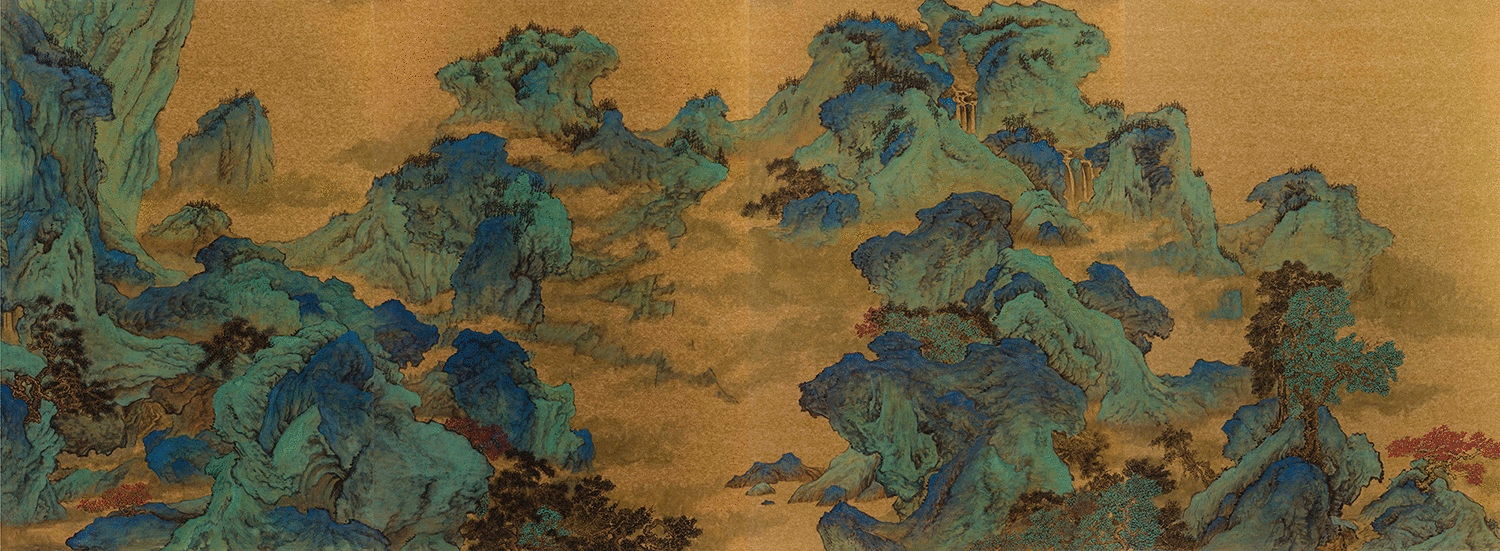
Graduation Creation of Liu Jinxia, 2019-2020, Ink and color on gold paper
CAFA ART INFO: We know that in the past Chinese paintings emphasized the privacy of scroll reading, but today’s exhibitions in art galleries and even online exhibitions undoubtedly break with the traditional display form. How do you view this issue?
Qiu Ting: The traditional method of private views is really difficult to realized in modern art museums. During the period of Republic of China, Chinese paintings were sent to Western art museums to participate in exhibitions and art fairs and the resulting display effect was not very satisfactory. Over the past decade or so, some ink artists have attached great importance to the relationship between their works and public spaces. There have been many bold and gratifying attempts. In some major overseas spaces and museums, they have made amazing creations and exhibitions. The style of viewing and exhibiting Chinese paintings has always been diversified, especially in the Song Dynasty, there were both displays emphasizing public art and private displays such as round fans, albums and scrolls.


Exhibition View of “Vision” by Qiu Ting and Xu Jianwei at Today Art Museum
The public spaces in current museums are now based on the so-called democratic system of per capita space occupation, which is quite different from the traditional way of relatively private viewing, including the presupposition of the audience. In 2011, Mr. Wu Hongliang curated a duo exhibition “Vision” for me and Xu Jianwei at the Today Art Museum featuring our scrolls and albums of paintings. The space design slowly unfolded like a hand scroll, which constructed a challenge for the modern exhibition viewing system. The exhibition explores the contradiction between the unique appreciation of Chinese art and the modern art museum. The exhibition was such an interesting attempt that it was rated as “a unique highlight in the ink and wash exhibition” in 2011.
As for the online exhibition, since there is no physical exhibition of the works, the physical sense of the works and the visual thought coexist, such as from the viewing ceremony at the museum to the design of the exhibition for the specific works, the displaying area of artworks constructed by the physical museum is weakened and even offset, it will surely have an impact on the meaning and display of the works.
CAFA ART INFO: How should today’s Chinese painting artists deal with the relationship between the work and the white cube space of the contemporary art museum?
Qiu Ting: The white cube has another meaning of interpretation. It is the most extreme display space to construct the field of works. However, the traditional way of viewing and displaying traditional Chinese paintings cannot be mechanically restricted and the state mentioned above does not mean that we should completely return to the scholarly system of viewing during the Yuan and Ming Dynasties. It is still combined with the modern way of viewing and behavior and its significance lies in making people today remember a way of viewing our past and the meaning of the work in a certain viewing state. For example, traditional elegant collection activities have produced many works of art and behaviors. The process is rich, complex, elegant and full of experimentation. But today it is missing, we should try to wake up this state. These elegant collection activities are worthy of contemporary research and teaching for the ink and wash practitioners to excavate and study, as the purpose is to enrich and subtly show the generation of ancients and Chinese art. It can inspire the process of contemporary academic themes that are advanced in concept or in general.
 Inscription on students' exhibition is related to tradition
Inscription on students' exhibition is related to tradition
Today, many curators or artists can do some whimsical things when dealing with the space of the museum, or they can achieve a lot of space reform in design and adaptation of the space. Combined with their feelings and the reading methods they want, they will achieve an interesting spatial logic. For example, “Willing to Learn”—my solo exhibition at the Guangdong Museum of Art in 2017, used “by considering the past and you will know the future” as a clue. My works echoed each other in the delicate structures composed of corridors and windows in a Jiangnan-style courtyard exhibition space. Curator Wu Hongliang refined the “l(fā)anguage” of octagonal prism adapted for the artistic conception of the exhibition according to the space and architectural style of the Guangdong Museum of Art, which echoed the octagonal patio of the Guangdong Museum of Art. I wrote “Eight Scenery Poems of Xiaoxiang” by Zhang Jing of Song Dynasty on the eight prisms with light ink made of pine smoke. This work was made in combination with space.

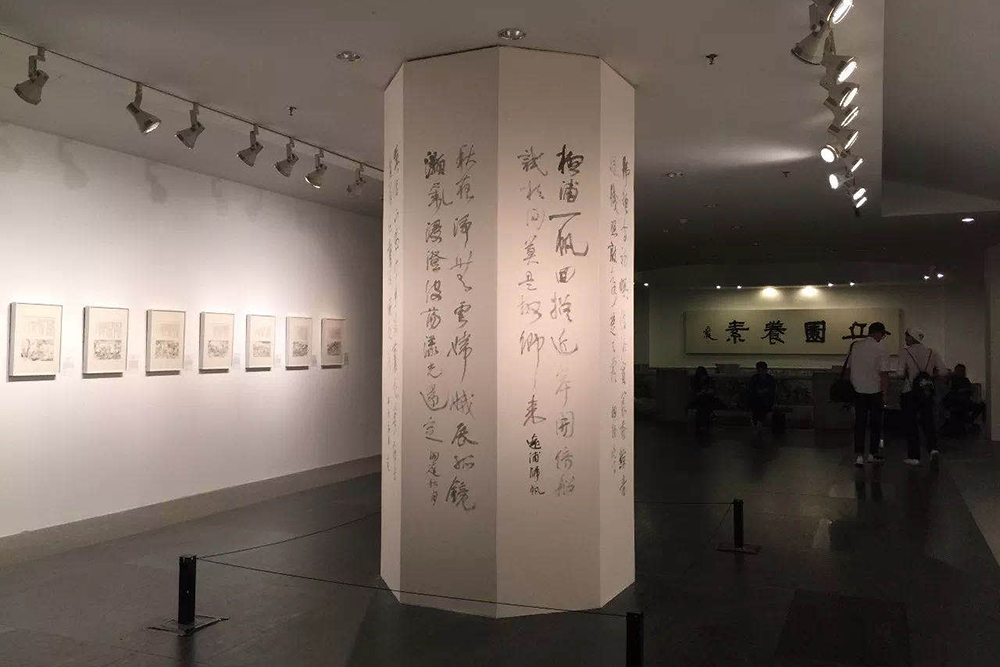
Exhibition View of “Willing to Learn”
It is worth discussing how traditions are integrated with today and how to adapt to today’s behavioral viewing methods. In the long run, architects are bound to design contemporary art museums will conform to oriental aesthetics, such as the Nezu Museum in Japan and the Suzhou Museum. However, how to refine the interior space design of the museum can still be explored.
CAFA ART INFO: This year, CAFA has launched the “online” virtual museum exhibition hall for the first time. What do you think of the future development of this new form of graduation exhibition?
Qiu Ting: It is bound to be popular in the future. This year's pandemic has indeed spawned this node in advance, which allows the exhibition to enter a new viewing program and ceremony. This is very similar to what the previous scholars said, “unfolding the scroll and elegantly observing It,” to get a horizontal view of the country in a digital era. If the audience is interested in the works, through the online exhibition hall, the works and artists can be more easily understood. Viewers can also watch the exhibition slowly which also promotes a wider, multi-level and diversified audience participation.
The emergence and development of each new technology will bring unexpected surprises and we are also looking forward to them.
With the development and application of big data technology, many customized virtual products and experiences have been tailored to user habits and different interests have emerged. Online exhibitions may also develop personalized exhibition and viewing experiences through big data analysis of each audience’s taste and interest. It can even cooperate with game companies and provide viewers with a full-scale immersive experience through real-life images. This is suitable for certain art categories such as video, animation, fashion design, auctions or art fairs.
New technologies have a great role in promoting a certain category of arts and sciences that are closely related to morphology and genetics. However, virtual exhibitions cannot replace the ideas generated by the exhibition space constructed by the museums, which are related to the creation, viewing and non-routine isolation of art works. Especially the appreciation of the style, artistic conception and charm of the paintings, which extend from the core of craftsmanship, cannot avoid the subtle, close-up viewing of the original works or even get started.
CAFA ART INFO: Do you remember your graduation exhibition? From then to now, please talk to us about your feelings.
Qiu Ting: Graduation creation and exhibitions are several important nodes in my artistic career. My graduation works for degree shows at the undergraduate, master, and doctoral level were all created under great pressure. I used to worry about it, especially when I graduated as a BA and MA. Since I often lost my feeling in drawing, I suffered from insomnia or anxiety. In fact, the heavy sense of oppression often came from my own psychological state. I remember that my BA graduation creation “Min Garden” and the thesis on “Research on Opening and Closing” won the second prize of the “Meiyuan Cup” national art college graduation creation and the first prize of the thesis.
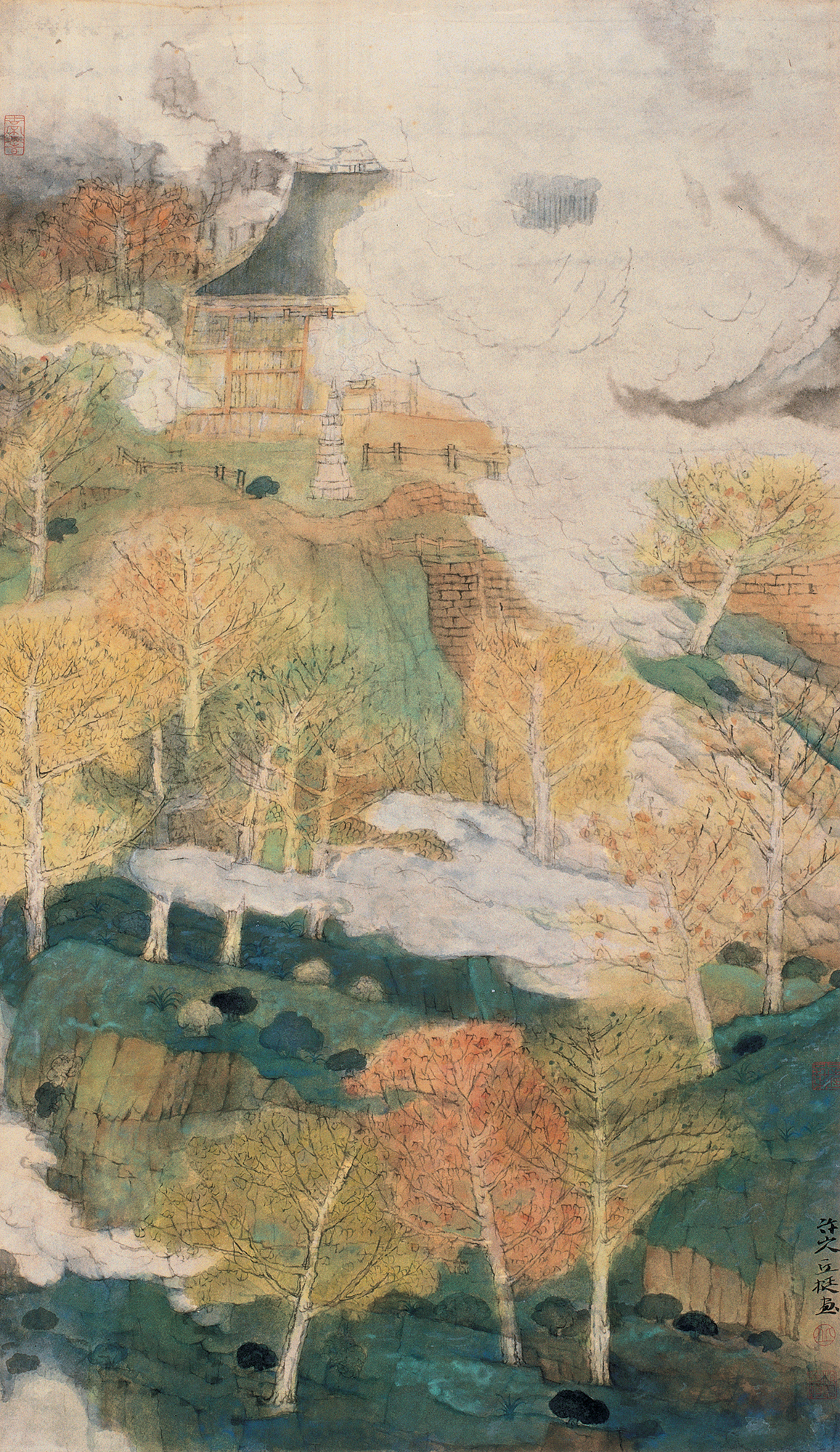
BA Graduation Work by Qiu Ting, Min Garden Series, Floating Clouds in the Temple, 1996
Ink and color on paper, 136×68cm
We had a small number of graduate students in those days. Graduation exhibitions of various departments were not held simultaneously in the art museum, but were exhibited in turns. At that time, we both had to fill a large exhibition hall (the old exhibition hall of China Academy of Art). In fact, it was equivalent to a duo solo exhibition, so that the pressure was also great. At the time, in addition to a few large works, two sets of themed series were also exhibited.
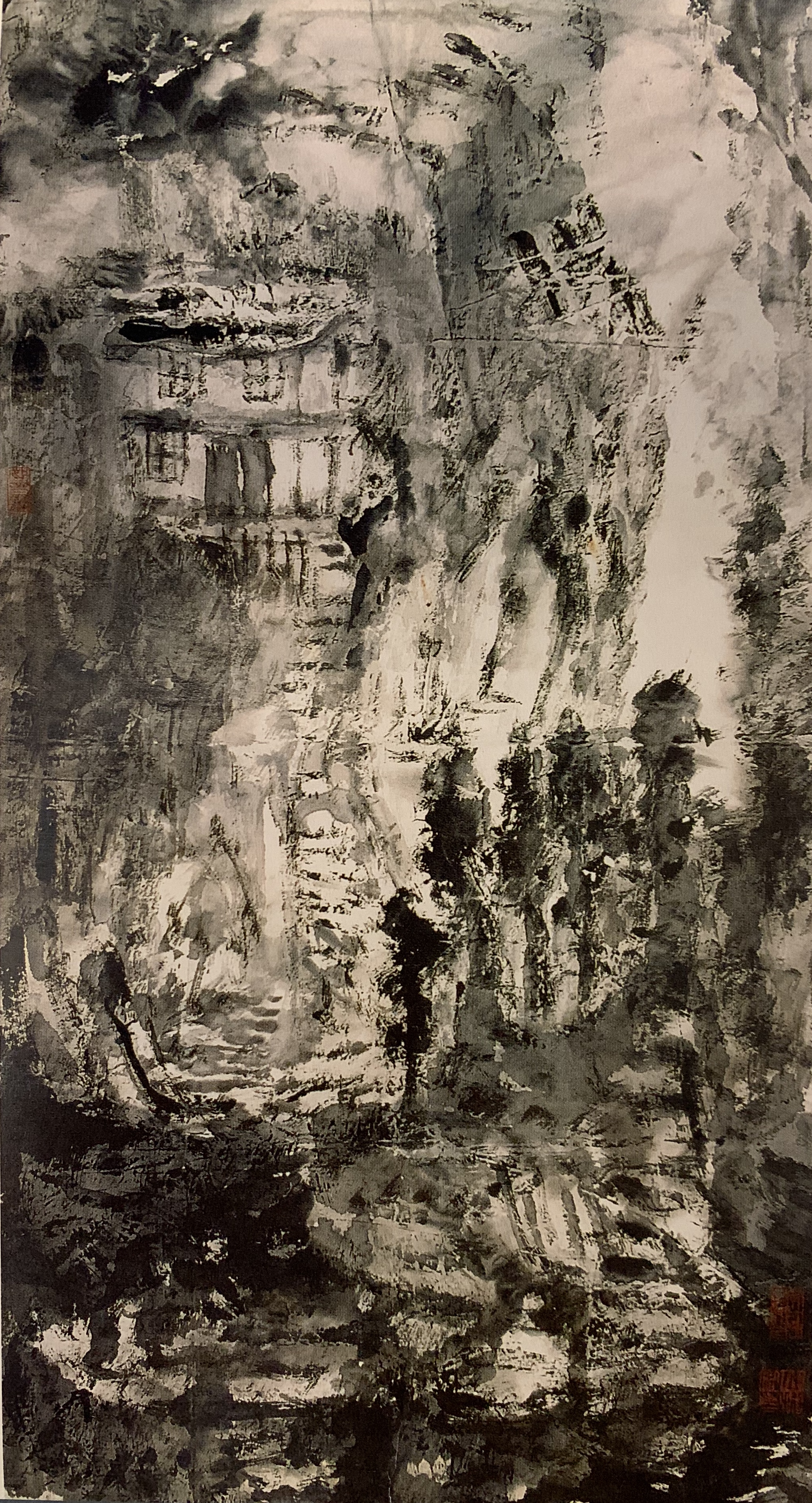
MA Graduation Work by Qiu Ting, Picture of Yanyan, 1999; Ink on paper, 116x53cm
My doctoral graduation exhibition in 2003 happened to take place in the period of SARS, so the graduation exhibition and thesis defense were pushed back one semester. I was in the first session of Ph.D. in practice and theory (of Chinese Painting) in China. Mr. Zhang Ding and Mr. Yuan Yunfu from Tsinghua University were looking forward to it and the art world and other art schools were also very concerned about us. I remember that a total of five classmates participated in the graduation defense. It began at 8:30am in the morning and ended at over 1:00 am. The 87-year-old Professor Zhang Ding had been participating, which really touched me. After graduation, I exhibited more than 20 works. Afterwards, I was invited by Hebei Shanhua Publishing House to create a book about my path to study. It was very popular at that time. This book seems a bit ridiculous to me now.
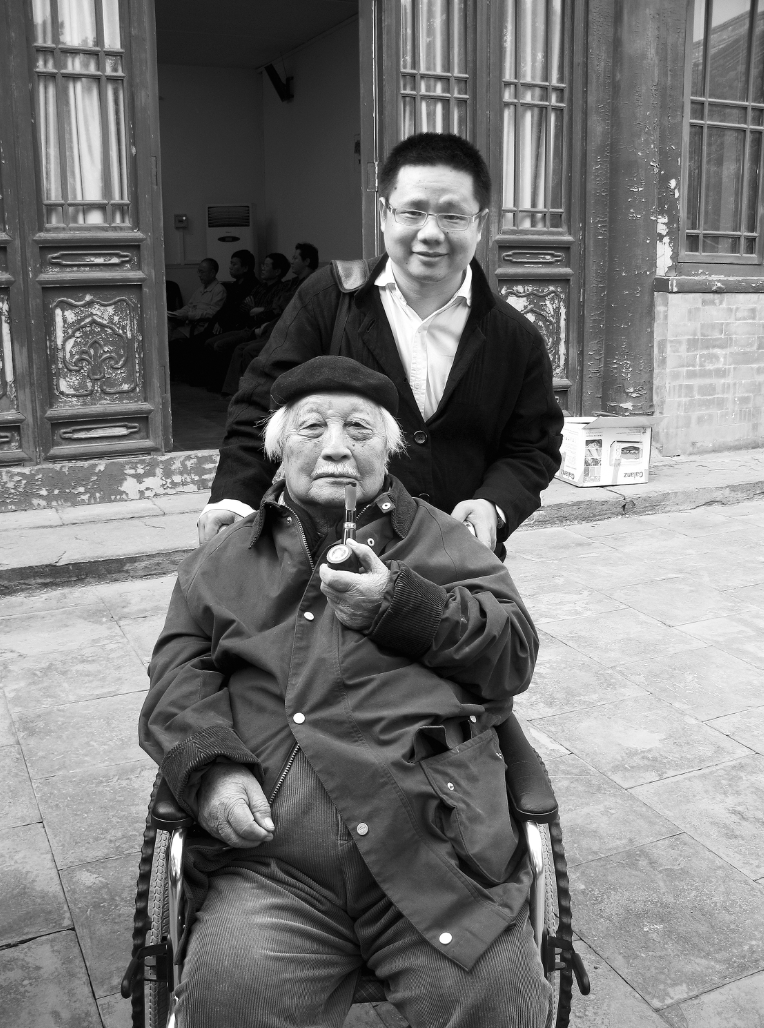
Qiu Ting and His Doctoral Supervisor Zhang Ding

Qiu Ting, Among Clouds (created during the pandemic of COVID-19), 2020; Ink on silk, 23x53cm
CAFA ART INFO: Finally, please send your wishes to the graduating students.
Qiu Ting: Cherish life, be courageous in making progress.
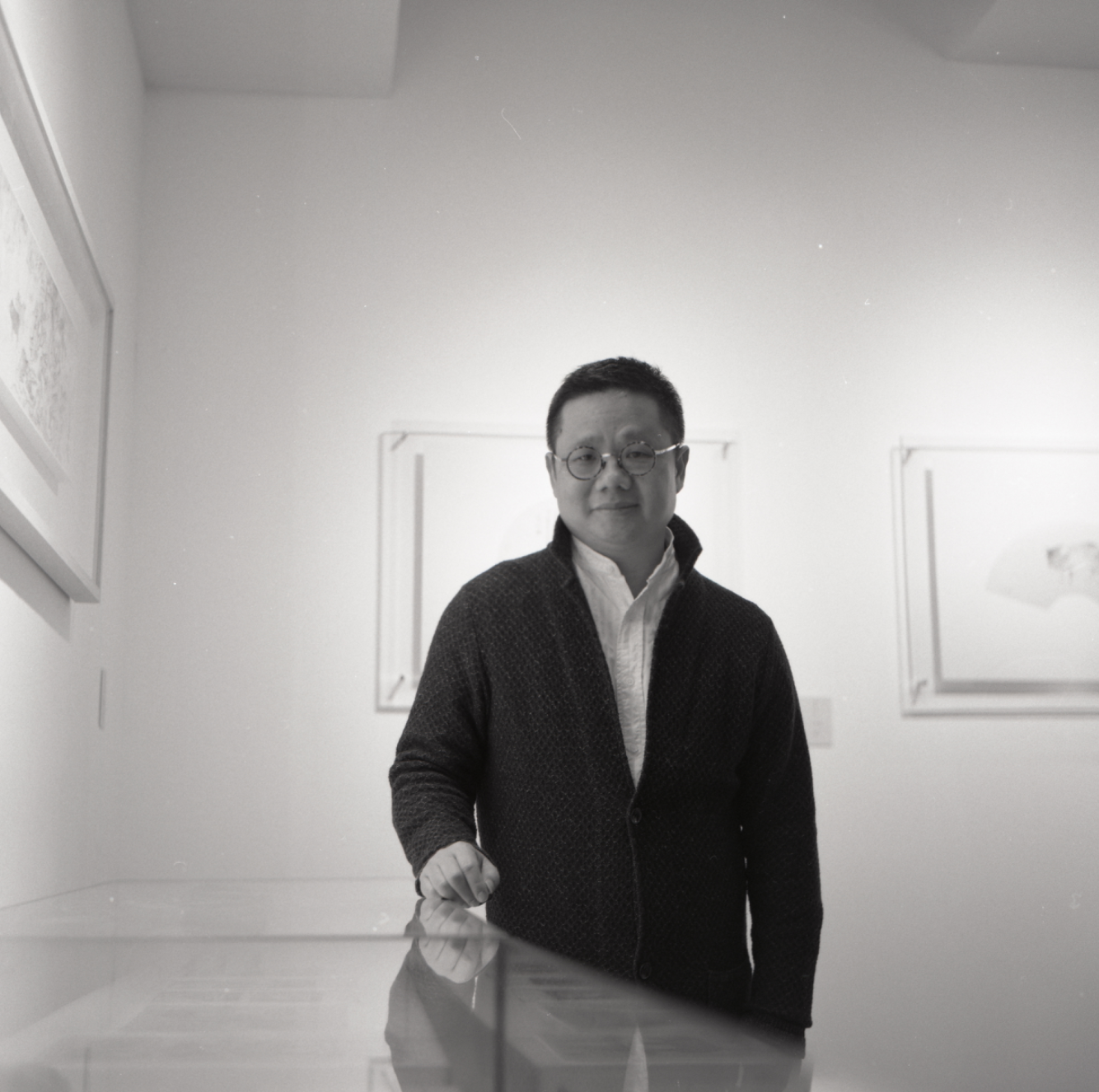
About Qiu Ting
Born in 1971 in Guangdong, Qiu Ting received undergraduate and graduate degree from the School of Chinese painting(landscape-oriented) of Central Academy of Fine Arts from 1992 to July 2000. And he received Doctor of Fine Arts from the School of Fine Arts of Academy of Arts & Design, Tsinghua University from September 2000 to January 2004. Since 2004, he has been teaching at the Central Academy of Fine Arts as the Director, Professor and Doctoral Supervisor of School of Chinese painting(landscape-oriented).
His works has been collected by many art museums and galleries, such as the Palace Museum, National Art Museum of China, Boston Art Museum, the Royal Ontario Museum in Toronto, Canada, Federal Council of Brittany in France, Zhejiang Art Museum, Guangdong Art Museum, Wuhan Art Museum, Shenzhen Art Museum, Tsinghua University Art Museum, China Academy of Art, Central Academy of Fine Arts, etc.
He also published a number of monographs, like Landscape painting’s detailed explanation on brush and ink techniques, Study of landscape painting creation in Song Dynasty, Review of famous paintings from previous dynasties—Dwelling in the Qingbian Mountains, Painting of herd of deer in the forest of fall, Collection of techniques using by famous artists from previous dynasties—techniques on cloud and river, Royal boat and bridge, Figures decorated in the landscape, Landscape of Yuan Dynasty, Talk on contemporary Chinese Artists—volume of Qiu Ting. His published catalogs include landscape painting by Qiu Ting, Classic painting of famous artists—volume of Qiu Ting, Qualities of Garden of Qiu, Appreciation of landscape, The eye of landscape, etc.





